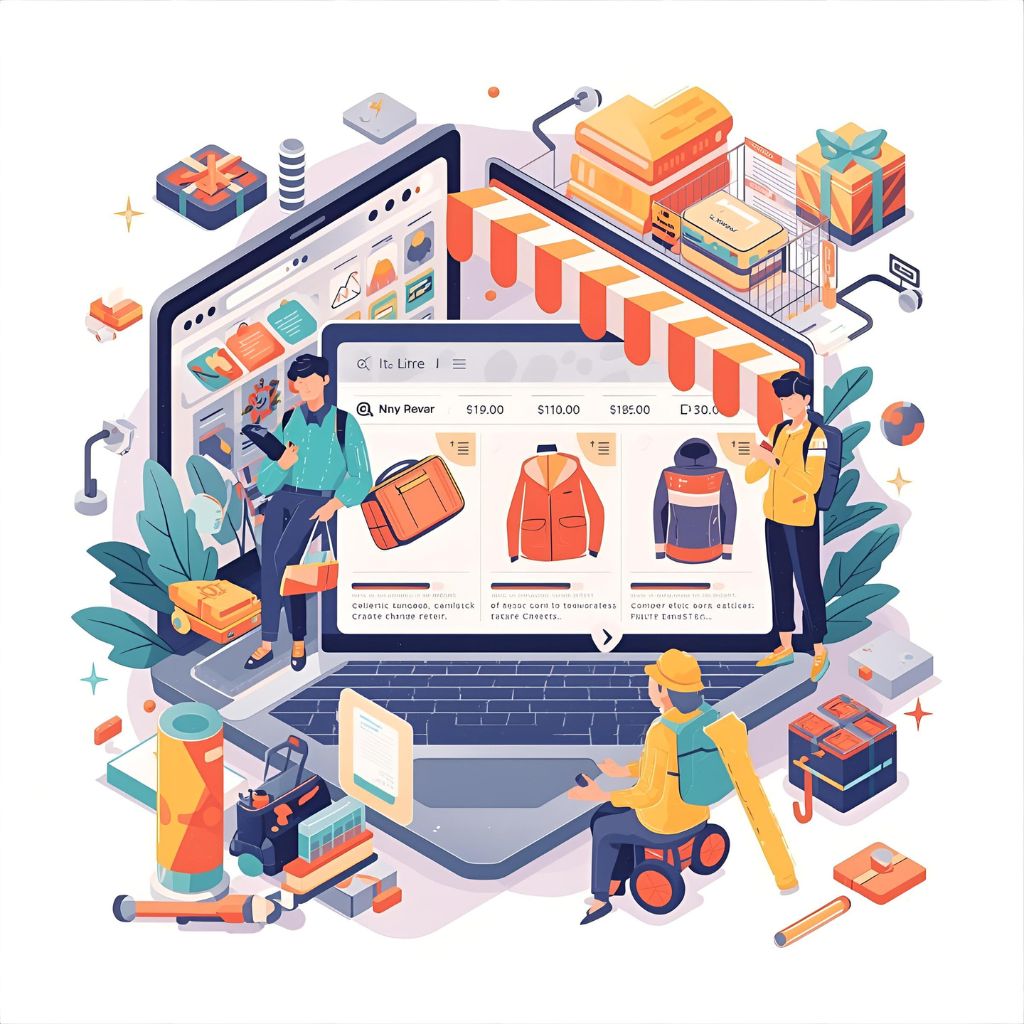
In today’s hyper-competitive online retail landscape, offering generic product lists is no longer enough. Shoppers expect tailored recommendations, instant assistance, and frictionless experiences at every touchpoint. This is where AI bots step in, enabling e-commerce businesses to deliver personalized shopping journeys that drive engagement, increase average order values, and foster loyalty. In this comprehensive guide, we’ll explore how AI bots work, their key benefits for e-commerce, implementation steps, real-world case studies, best practices, and future trends you need to watch. By the end, you’ll have a clear roadmap to leverage AI bots and transform your online sales model.
Why Personalization Matters in Online Retail

Personalization is no longer a nice-to-have—it’s a must-have. Studies show that 80 percent of consumers are more likely to purchase from brands that offer personalized experiences. When your site greets a returning visitor by name, suggests products based on browsing history, or reminds them of abandoned carts with relevant incentives, you establish a connection that drives conversions. AI bots amplify these capabilities by analyzing real-time data and making dynamic recommendations, ensuring each shopper feels uniquely catered to.
How AI Bots Work for Personalization
At the core of intelligent e-commerce bots are machine learning (ML), natural language processing (NLP), and predictive analytics. Here’s a simplified workflow:
- Data Collection: The bot gathers customer data from browsing behavior, purchase history, demographics, and social signals.
- Profile Building: Advanced algorithms segment users into personas and preferences based on patterns and affinities.
- Interaction Management: NLP allows the bot to understand queries, recommend products, and answer questions in conversational language.
- Real-Time Personalization: Dynamic content insertion tailors homepage banners, email campaigns, and chat suggestions to each visitor.
- Continuous Learning: Bots refine their models with feedback loops, improving accuracy over time.
Key Benefits of AI Bots for E-Commerce

- Higher Engagement: Real-time chat support and personalized prompts keep shoppers immersed in your store, reducing bounce rates.
- Improved Conversions: Tailored product recommendations often lead to a 10–30 percent lift in conversion rates.
- Increased Average Order Value: Upselling and cross-selling suggestions based on past purchases can boost cart values by 15–25 percent.
- 24/7 Customer Assistance: AI bots never sleep, ensuring visitors receive instant answers and support around the clock.
- Operational Efficiency: Automating routine queries frees human agents to handle complex issues, reducing support costs.
Real-World Case Studies
Brand A: An apparel retailer integrated an AI chatbot that suggested outfits based on style quizzes. Within three months, they reported a 20 percent increase in average order value and a 35 percent boost in repeat purchases.
Brand B: A cosmetics e-commerce platform deployed a bot that offered personalized skincare routines after a quick skin quiz. The initiative drove a 25 percent uptick in sales and cut customer support inquiries by 40 percent.
Step-by-Step Implementation Guide
Follow these phases to successfully deploy AI bots in your e-commerce operation:
- Define Clear Objectives: Determine if your priority is boosting conversions, reducing support costs, or improving customer satisfaction.
- Choose the Right Platform: Evaluate bot solutions for e-commerce integration, ease of customization, channel support (web, mobile, messaging apps), and analytics capabilities.
- Gather and Clean Data: Consolidate customer data from your CRM, analytics, and purchase history. Ensure privacy compliance by anonymizing or encrypting sensitive information.
- Design Conversational Flows: Map out user journeys, defining triggers for recommendations, upsells, and support. Include fallback paths for unrecognized queries.
- Integrate with Backend Systems: Connect your bot to inventory databases, order management systems, and payment gateways for seamless transactions.
- Train and Test: Feed historical chat logs and user interactions into the bot’s ML engine. Conduct A/B tests to optimize scripts and recommendation logic.
- Launch and Monitor: Roll out the bot to a segment of your audience first. Monitor KPIs like response time, intent recognition accuracy, and conversion lift.
- Iterate and Improve: Use analytics dashboards to identify drop-offs and refine conversational flows. Update your models with fresh data regularly.
Best Practices for Maximum Impact
- Respect Privacy: Clearly explain data usage policies and obtain explicit consent before personalizing interactions.
- Seamless Human Handoff: When a bot reaches its limit, smoothly transfer the conversation to a live agent without forcing the customer to repeat information.
- Omnichannel Consistency: Ensure the bot maintains context across web, mobile app, email, and social messaging channels.
- Personalize Beyond Recommendations: Use bots to send order updates, restock alerts, birthday gifts, and loyalty program reminders.
- Monitor Sentiment: Track customer satisfaction scores and adjust bot tone and responses to match your brand voice.
Measuring Success: Key KPIs
To evaluate performance, track metrics such as:
- Conversion Rate: Percentage of visitors who complete a purchase after interacting with the bot.
- Average Order Value (AOV): Measure uplift in cart size when bots suggest complementary products.
- Engagement Rate: Ratio of users who accept recommendations versus total chats initiated.
- Customer Satisfaction (CSAT): Post-interaction surveys to rate bot helpfulness and ease of use.
- Support Cost Savings: Reduction in live agent workloads and average handling time.
Future Trends in AI-Powered E-Commerce
The next wave of innovation will push personalization even further:
- Voice Commerce Bots: Assist shoppers via smart speakers and voice assistants for hands-free ordering.
- Augmented Reality (AR) Integration: Combine AR product try-ons with AI-driven style suggestions in real time.
- Predictive Inventory Alerts: Bots will forecast stockouts and notify customers proactively about replenishments.
- Hyper-Personalized Promotions: Dynamic coupons and bundles tailored to individual browsing and buying signals.
- Emotional AI: Sentiment analysis that adapts bot tone, empathy, and urgency for superior customer rapport.
Conclusion & Next Steps
AI bots represent a transformative opportunity for e-commerce brands aiming to differentiate through personalization and superior customer experiences. By leveraging machine learning, natural language processing, and predictive analytics, you can deliver relevant product suggestions, automate support, and continually optimize interactions for maximum revenue impact. Start by defining clear business objectives, selecting the right platform, and iterating on conversational designs based on real user feedback. As you gain traction, keep an eye on emerging technologies like voice commerce and AR to stay ahead of the curve. Implement AI bots today to turn every visitor into a delighted customer and unlock new levels of growth.
For a detailed breakdown of how AI is transforming threat response, read our full guide on leveraging AI bots for cybersecurity.









Leave a Reply